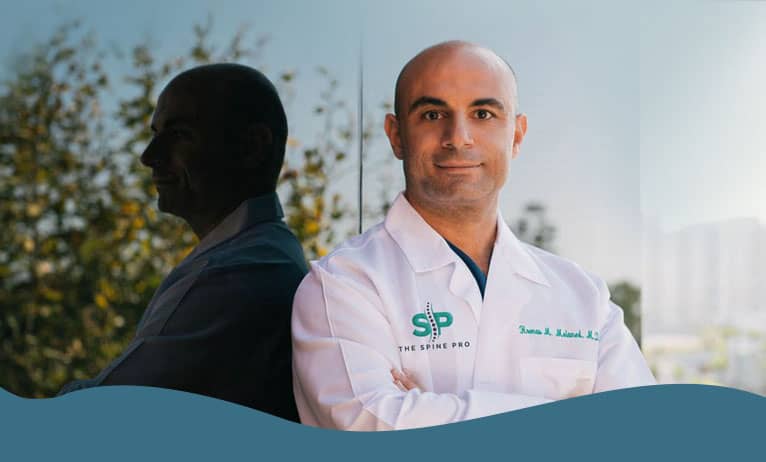Identifying and Treating Cervical Radiculopathy
Cervical radiculopathy, often referred to as a pinched nerve in the neck, is a condition that may cause significant discomfort and affect daily activities. It occurs when a nerve in the neck is compressed or irritated, leading to pain, numbness, or weakness radiating from the neck into the shoulders, arms, and hands.

Symptoms of Cervical Radiculopathy
- Radiating pain from the neck to the shoulder, arm, or hand
- Numbness or tingling sensations in the arms or fingers
- Muscle weakness in the shoulder, arm, or hand
- Loss of reflexes in the arm or hand
- A burning or sharp pain in the neck, shoulder, or arm
- Difficulty with fine motor skills, such as picking up small objects
- Headaches that may originate from the neck area
Causes of Cervical Radiculopathy
Degenerative changes, herniated discs, and traumatic injuries are among the most common causes of cervical radiculopathy. Each of these causes can lead to the compression or irritation of the cervical nerves, resulting in the symptoms detailed above.
Degenerative Changes
As we age, the spine undergoes natural wear and tear. Degenerative changes, such as the development of bone spurs or the narrowing of the spinal canal (spinal stenosis), may lead to the compression of cervical nerves. These changes are often part of the aging process but can be exacerbated by factors like poor posture, repetitive neck movements, or a history of heavy manual labor.
Herniated Discs
A herniated disc occurs when the soft inner material of a spinal disc protrudes through a tear in the outer layer. This protrusion can press against nearby nerves, causing the pain and discomfort associated with cervical radiculopathy. Herniated discs are often the result of sudden trauma, improper lifting techniques, or degenerative disc disease.
Traumatic Injuries
Sudden injuries, such as those sustained during car accidents, sports activities, or falls, can cause immediate and severe compression of the cervical nerves. These traumatic events can lead to disc herniation, fractures, or dislocations in the cervical spine, all of which can contribute to the onset of this condition.
How Cervical Radiculopathy is Diagnosed
Diagnosing cervical radiculopathy involves a thorough clinical evaluation, often beginning with a detailed medical history and physical examination. Physicians look for symptoms, such as pain radiating from the neck into the arms or hands, along with numbness and muscle weakness.
Diagnostic imaging tests like MRI, CT scans, or X-rays are commonly used to visualize the spine’s structure and identify abnormalities, such as herniated discs or bone spurs. Electromyography (EMG) and nerve conduction studies may also be performed to assess nerve function and pinpoint the exact location of nerve compression.
Treatment Options
Effectively managing the symptoms and causes requires a multifaceted approach that may include conservative therapies, medications, and potentially surgical interventions. The goal is to alleviate discomfort, enhance mobility, and address the root cause of the nerve compression.
Conservative Therapies
For many patients, non-surgical treatments can significantly relieve symptoms. Physical therapy is often recommended to improve strength and flexibility in the neck and shoulders, which can reduce nerve irritation. Therapeutic exercises and posture correction practices aim to lessen the pressure on the affected nerves. Additionally, applying heat or cold packs can alleviate pain and reduce inflammation.
Medications
Over-the-counter pain relievers, such as ibuprofen or acetaminophen, are often used to manage mild to moderate pain. In cases of more severe discomfort, a healthcare provider may prescribe other medications, including muscle relaxants or corticosteroids, to reduce inflammation and pain. Oral steroids or steroid injections directly into the cervical spine can provide relief by targeting inflammation around the affected nerve.
Surgical Interventions
Spine surgery may be considered when conservative treatments fail to provide sufficient relief or if symptoms significantly hinder daily activities. Various surgical procedures are available, depending on the specific cause. For example, a discectomy may be performed to remove a herniated disc fragment pressing on a nerve, while a foraminotomy can enlarge the space where the nerve exits the spine. Fusion might also be recommended to stabilize the spine in cases of severe degenerative changes.
Lifestyle Modifications
Incorporating ergonomic adjustments and adopting a healthy lifestyle can support long-term management and prevention. Simple changes, like adjusting the height of your computer screen, using supportive seating, and practicing good body mechanics during activities, can significantly reduce the strain on your neck. Additionally, maintaining a healthy weight, eating a balanced diet, and staying active can promote spinal health and prevent future episodes.
Find Relief from Cervical Radiculopathy
Don’t let cervical radiculopathy hold you back from enjoying life to the fullest. The Spine Pro’s Dr. Hooman Melamed is dedicated to providing personalized care and effective treatment options tailored to your needs. By booking an appointment with us, you’ll receive a comprehensive evaluation and a customized treatment plan to alleviate your pain and improve your quality of life. Click here to request an appointment today.






